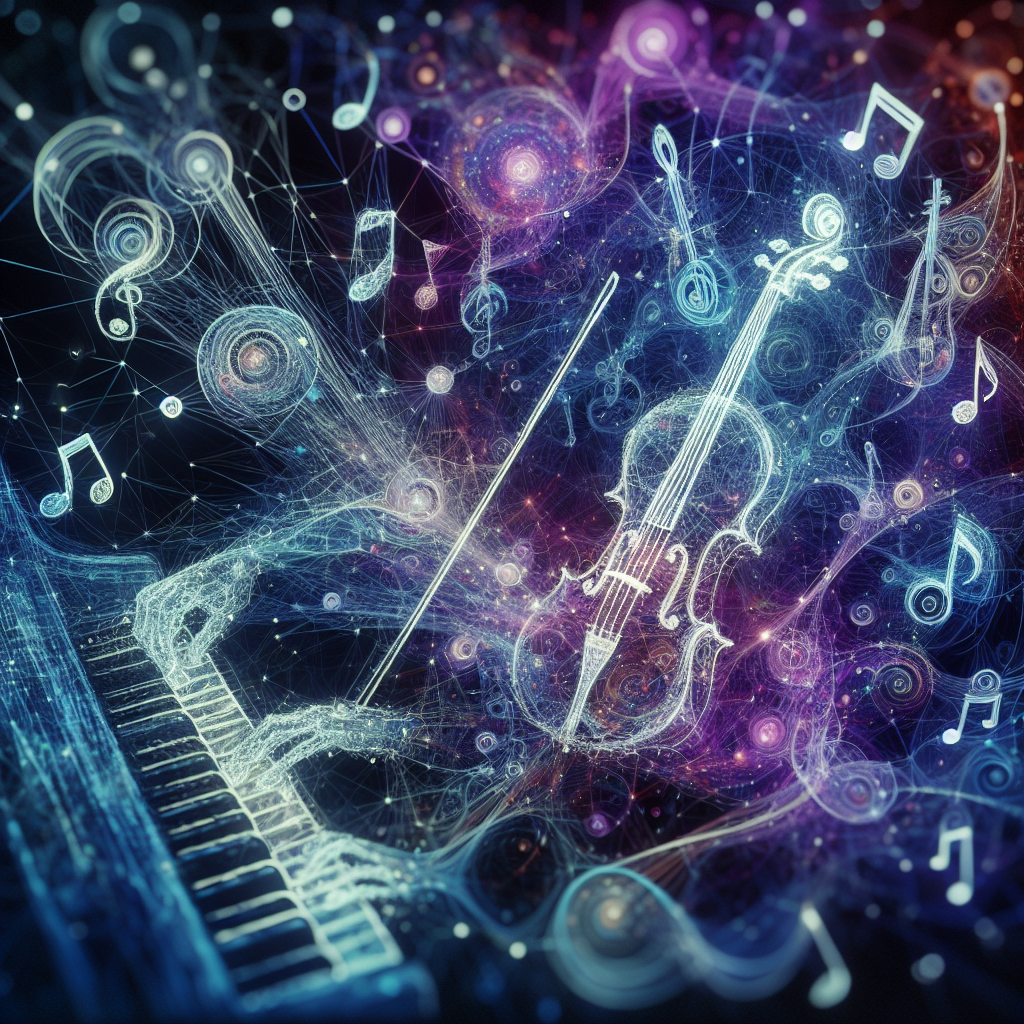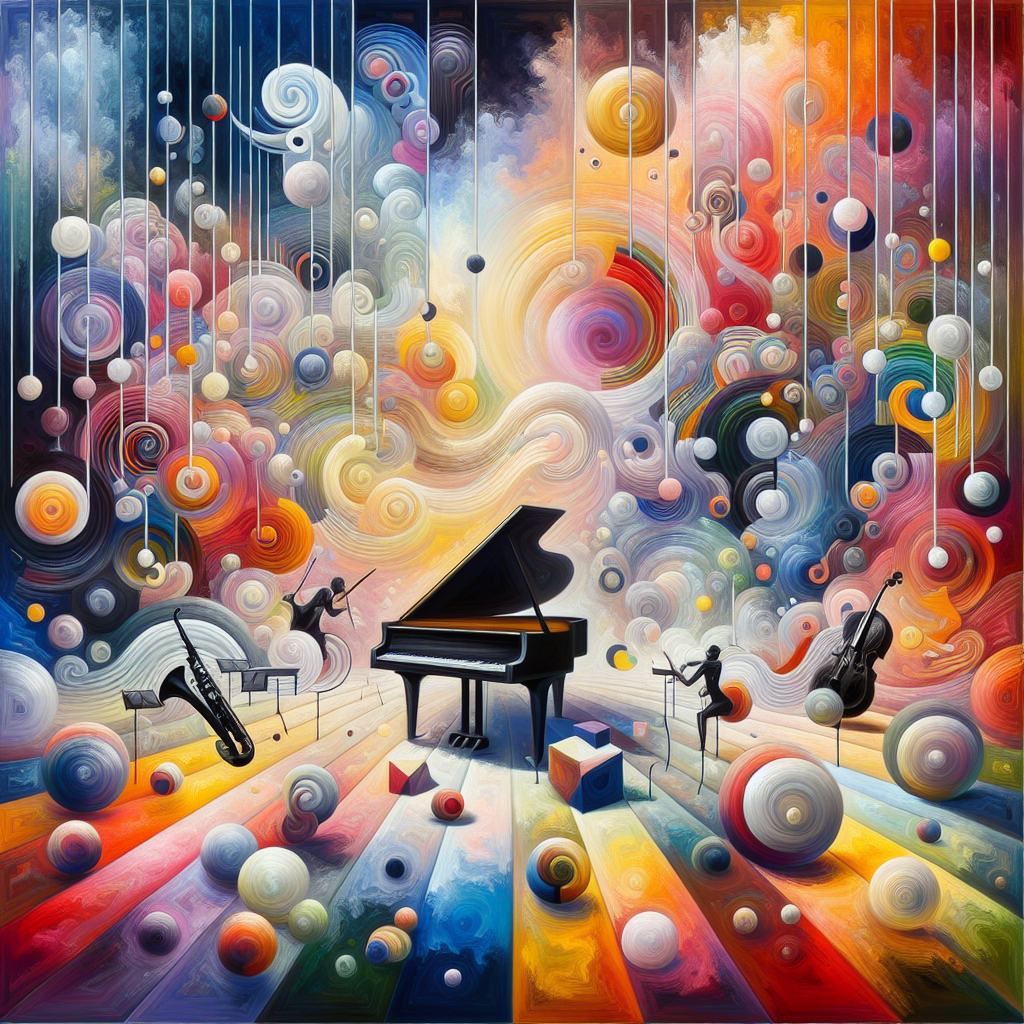-
Table of Contents
MuseNet is a deep neural network developed by OpenAI that is capable of generating musical compositions with multiple instruments and in various styles. It was designed to understand and produce music by learning from a large dataset of pieces from different genres, ranging from classical to pop. MuseNet can generate music with a structure that includes repetition and development, making its compositions complex and coherent. It represents a significant advancement in the field of artificial intelligence and its application in creative arts, showcasing the potential of AI to not only understand and replicate human creativity but also to produce original and diverse artistic expressions.
Exploring the Capabilities of MuseNet: A Deep Dive into AI-Generated Music

MuseNet stands as a groundbreaking innovation in the realm of artificial intelligence, particularly in the field of music generation. Developed by OpenAI, this deep neural network has the remarkable ability to generate musical compositions with a level of complexity and coherence that was previously unattainable. This exploration into MuseNet’s capabilities offers a fascinating glimpse into the future of AI-generated music, shedding light on how this technology is not just mimicking but also contributing creatively to the musical landscape.
At its core, MuseNet is designed to understand and generate music by learning from a vast dataset of pieces spanning various genres, from classical to contemporary pop. What sets MuseNet apart is its capacity to handle up to ten different instruments simultaneously, allowing for the creation of rich, multi-layered compositions. This capability is rooted in its training process, where the AI analyzes patterns, structures, and the intricate relationships between different musical elements across a wide array of styles. By doing so, MuseNet gains a nuanced understanding of music theory and composition, enabling it to produce pieces that are not only technically sound but also emotionally resonant.
One of the most intriguing aspects of MuseNet is its versatility. The AI can generate music in the style of specific composers or genres, offering users the unique opportunity to hear new compositions that might resemble the works of Beethoven, The Beatles, or any other artist within its training data. This feature not only showcases MuseNet’s adaptive learning capabilities but also opens up new avenues for exploring musical creativity. Imagine a piece that blends the complexity of classical compositions with the catchy rhythms of pop music, or a new symphony that captures the essence of a beloved composer’s style while introducing novel elements. MuseNet makes these imaginative scenarios possible, pushing the boundaries of traditional music composition.
Furthermore, MuseNet’s potential extends beyond mere entertainment or academic interest. In the realm of music education, it can serve as a powerful tool for teaching composition and theory, offering students immediate feedback on their work and inspiring them by demonstrating a wide range of musical possibilities. For composers and musicians, MuseNet can act as a collaborative partner, suggesting variations and helping to overcome creative blocks. Its ability to generate music in real-time also opens up exciting possibilities for live performances, where AI-generated compositions could accompany human musicians, creating a unique blend of human and machine creativity.
However, the advent of technologies like MuseNet also raises important questions about authorship, originality, and the role of AI in creative processes. As AI-generated music becomes more prevalent, the music industry and its audiences will need to navigate these complex issues, balancing the benefits of innovation with the preservation of human creativity and expression.
In conclusion, MuseNet represents a significant leap forward in the field of AI-generated music. Its advanced capabilities not only demonstrate the potential of artificial intelligence to understand and create complex musical compositions but also hint at a future where AI plays a more integral role in the creative arts. As we continue to explore and refine these technologies, the possibilities for collaboration between human and machine in the pursuit of musical expression are boundless. MuseNet is not just a tool for generating music; it is a window into the future of creativity, where the lines between human and artificial creativity are increasingly blurred.
The Evolution of AI in Music Composition: The Role of MuseNet
Title: The Evolution of AI in Music Composition: The Role of MuseNet
The intersection of artificial intelligence (AI) and music composition has heralded a new era in the creative arts, challenging traditional notions of creativity and authorship. Among the vanguard of this technological revolution is MuseNet, a deep neural network that has significantly impacted how music is composed, produced, and conceptualized. This groundbreaking AI, developed by OpenAI, has not only demonstrated the potential of machine learning in creating complex musical compositions across a variety of genres but has also sparked a broader conversation about the role of AI in the creative process.
MuseNet’s inception marked a significant milestone in the evolution of AI music composition. Unlike its predecessors, which were often limited to generating simple melodies or mimicking specific styles, MuseNet has the capability to understand and produce music that spans multiple genres, from classical to contemporary pop. This versatility is achieved through its training on a vast dataset of songs from different eras and styles, enabling it to recognize and replicate the intricate patterns and structures that characterize different musical genres. Consequently, MuseNet has opened up new possibilities for experimentation and innovation in music composition, allowing composers to blend genres and styles in ways that were previously unimaginable.
Furthermore, MuseNet’s role extends beyond mere composition. It serves as a tool for inspiration and collaboration, offering musicians and composers new ways to approach their craft. By generating ideas and motifs that can be further developed or transformed, MuseNet acts as a creative partner in the composition process. This collaborative aspect of MuseNet challenges the traditional solitary image of the composer, suggesting a future where music creation is a more inclusive and collective endeavor, facilitated by AI.
The implications of MuseNet’s capabilities are profound, not only for the music industry but for our understanding of creativity itself. The notion that a machine can compose music that resonates emotionally with humans raises questions about the essence of creativity and whether it is a uniquely human trait. MuseNet’s success in generating emotionally compelling music suggests that creativity may be more about the ability to recognize and replicate patterns in novel ways, a skill that AI can increasingly emulate.
However, the advent of AI in music composition, exemplified by MuseNet, also raises ethical and philosophical questions. Issues of copyright and authorship come to the fore, as the lines between human and machine creativity become increasingly blurred. The music industry must grapple with these challenges, determining how to attribute credit and protect intellectual property in a landscape where AI plays a significant role in the creative process.
In conclusion, MuseNet represents a significant leap forward in the integration of AI into music composition, offering new tools for creativity and challenging our preconceptions about the nature of artistic creation. As AI continues to evolve, its role in the arts will undoubtedly expand, pushing the boundaries of what is possible and reshaping the creative landscape. The journey of MuseNet from a novel experiment to a transformative force in music composition underscores the potential of AI to not only mimic human creativity but to contribute to it in meaningful ways, heralding a new chapter in the symbiotic relationship between technology and the arts.
MuseNet and the Future of Creative Arts: Blending Technology with Music Creation
MuseNet and the Future of Creative Arts: Blending Technology with Music Creation
In the rapidly evolving landscape of the creative arts, the intersection of technology and traditional art forms has ushered in a new era of innovation and expression. Among the most groundbreaking advancements is MuseNet, a deep neural network that has the capability to generate musical compositions with a level of complexity and coherence that was previously unattainable. This development not only marks a significant milestone in the field of artificial intelligence (AI) but also opens up new horizons for music creation, challenging our conventional understanding of the creative process.
MuseNet operates by analyzing a vast dataset of musical pieces spanning various genres, styles, and epochs. Through this extensive training, it learns the underlying patterns, structures, and nuances that characterize different types of music. Armed with this knowledge, MuseNet can then generate original compositions that adhere to the stylistic elements of the input it was trained on. What sets MuseNet apart is its ability to blend styles and create music that can range from classical to contemporary, all while maintaining a coherent musical narrative.
The implications of MuseNet’s capabilities extend far beyond the realm of novelty. For composers and musicians, it represents a powerful tool for inspiration and experimentation. By generating ideas and motifs that can be further developed, MuseNet acts as a collaborative partner in the creative process, offering new possibilities that might not have been conceived otherwise. This collaborative aspect between human creativity and AI opens up a dialogue about the nature of art and the role of technology in enhancing human expression.
Moreover, MuseNet’s potential impact on the music industry cannot be overstated. In an era where content is king, the ability to generate high-quality compositions quickly and efficiently could revolutionize music production. From film scores to video game soundtracks, the applications are vast and varied. This does not imply that MuseNet or similar technologies will replace human composers; rather, they will augment the creative capabilities of artists, allowing them to push the boundaries of what is possible.
However, the advent of technologies like MuseNet also raises important ethical and philosophical questions. As machines begin to play a more significant role in the creative process, the definition of authorship and originality comes into question. The challenge lies in navigating these complexities while ensuring that technology serves to enhance human creativity, rather than diminish it.
Looking ahead, the integration of AI in music creation is poised to continue its trajectory of growth and innovation. As algorithms become more sophisticated and capable of understanding and replicating the emotional depth of music, the potential for creating truly moving and impactful compositions increases. This evolution will undoubtedly influence how we perceive, create, and interact with music.
In conclusion, MuseNet represents a fascinating convergence of technology and art, offering a glimpse into the future of creative expression. By blending the computational power of AI with the nuanced artistry of music, it challenges us to reimagine the boundaries of creativity. As we move forward, the synergy between human ingenuity and technological advancement promises to usher in a new era of artistic exploration, enriching the tapestry of human culture in the process.

